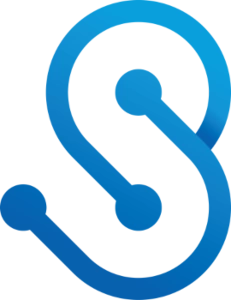Software.Land's Alignment with Society
February 14, 2024
Overview
Other blog posts have touched on the goals and mission of Software.Land. Examples include:
- About
- Information Asymmetry
- Software Engineer vs Software Developer
- Staying Ahead of the AI Revolution
- Why Learn to Code?
- Zero-Trust Security
These posts speak to the geopolitical, academic, organizational (within companies), and personal impacts that are envisioned by Software.Land (and its eventual successor). What hasn't been touched on yet is why the impact envisioned by Software.Land is so necessary. One needs to look at some socioeconomic trends to understand.
Socioeconomic Trajectories
If you look at the pace of growth in public debt in The United States, the fast pace of growth suggests a built-in expectation of very large increased productivity in the future. This would be the only way to pay off this future debt burden. However, such an increase would likely require unbridled growth in Artificial Intelligence (or other groundbreaking technologies). This level of growth in AI would necessarily displace millions of non-creative jobs in The United States. Where should these people go? The jobs that are being created are far from 1-to-1 replacements, and self-protectionist sentiments that promote information asymmetry contribute to reducing opportunities for these people. The lack of support for Software.Land's excellent blog posts is one example of self-protectionist sentiments that harm those without access to the right information (compare these blog posts to the top 10 in Google Search).
If you imagine a far away future, it's easy to foresee that one day, machines will be doing everything non-creative and many creative jobs as well. One exception might be jobs that require human interaction, but we're already on the path towards robots that are identical to humans. AI will even displace creative jobs (although some argue it could never equal or encompass all of human creativity). This trend towards increased automation is unabated. This suggests that Tech is the safest industry to consider funneling these people.
Software.Land's Solutions
To address these socioeconomic trajectories, Software.Land’s strategy rests on three pillars: structural reforms, opening the gates to software, and strong technical governance:
Structural Reforms
- Breaking down information asymmetry wherever it exists: Information Asymmetry is a common tool used to reduce one's need to produce more output. Combating it is possible with tools that make sharing information effortless.
- Address upstream inequities to reduce downstream regulatory pressure on AI: Many calls for increased regulation of AI focus on ensuring models are inclusive and unbiased. These concerns are important — but often they’re symptoms of deeper, pre-existing inequalities in society. For example, educational systems that favor legacy preference create unequal access to opportunities, which later gets reflected in training data and outcomes. If we addressed these upstream barriers (e.g., by removing legacy preference in college admissions), there would be less need for heavy-handed downstream measures (such as certain forms of affirmative action or model-level interventions) to "correct" those disparities after the fact.
Opening the Gates to Software
- Replace arbitrary barriers with transparent merit systems: The software industry often relies on opaque credentials and subjective evaluations. Software.Land advocates for a new model: Merit = Output (Quality × Quantity) ÷ Time. By emphasizing measurable output over time (such as an entire career in great detail), opportunities can be opened to more people — especially those historically excluded by credentialism and tribalism. I understand that many in software engineering find performance metrics to be a crude way of measuring an individual's value, however, we have tools today that we didn't have before. Furthermore, it's conceivable that there is a pendulum that needs to swing between consensus and KPI over decades/centuries. In my opinion, now is the time to move towards more advanced performance metrics.
Technical & Governance Measures
- Security as the backbone of openness: High information sharing requires robust zero-trust architectures, auditability, and role-based controls to protect legitimate boundaries.
- Objective talent evaluation systems: Removing human subjectivity from evaluations through standardized, transparent methods will help scale access without diluting quality. This is a future initiative under active development.
- Mechanism to give humanity (the people) more control of AI's truth and accuracy without limiting its potential: This is a future initiative under active development. Note: AI and LLM are often used interchangeably in common language and this is a non-technical blog post.
Conclusion
This post outlines Software.Land's socioeconomic alignment at a high level. It is a work-in-progress that will continue to be updated. This idea of standardization is certainly not the archaic one most are used to (referring to creating metrics that judge an individual over an entire career, rather than standardized testing).
Updated: 2025-11-23

